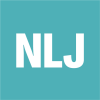Trade Union Channels for Influencing European Union Policies
DOI:
https://doi.org/10.19154/njwls.v5i3.4809Nøgleord:
Labor market institutions & social partnersResumé
This paper analyzes what channels trade unions in Europe use when trying to influence European Union (EU) policies. It compares and contrasts trade unions in different industrial relations regimes with regard to the degree to which they cooperate with different actors to influence EU policies, while also touching on the importance of sector differences and organizational resources. The study is based on survey data collected in 2010–2011 from unions affiliated with the European Trade Union Confederation and from below peak unions in 14 European countries. Results of the survey show that the ‘national route’ is generally the most important for trade unions in influencing EU policies in the sense that this channel is, on average, used to the highest degree. In addition, the survey delineates some important differences between trade unions in different industrial relations regimes with regard to the balance between the national route and different access points in the ‘Brussels route’.Downloads
Publiceret
Citation/Eksport
Nummer
Sektion
Licens
The Copyright Holder of this Journal is the authors and the Journal. Normally the journal use the CC-BY NC-ND 4.0 licence.
Exceptions to the license terms may be granted
If you want to use content in the Journal in another way then described by this license, you must contact the licensor and ask for permission. Contact Annica Asp at annica.asp@kau.se. Exceptions are always given for specific purposes and specific content only.
Sherpa/Romeo
The Journal is listed as a blue journal in Sherpa/Romeo, meaning that the author can archive post-print ((ie final draft post-refereeing) and author can archive publisher's version/PDF.
Copyright of others
Authors are responsible for obtaining permission from copyright holders for reproducing any illustrations, tables, figures or lengthy quotations previously published elsewhere.
Archives policy
All published material is archived at the Danish Royal Library in conformity with the Danish rules of legal deposit.
Plagiarism screening
We do not screen articles for plagiarism. It is the responsibility of the authors to make sure they do not plagiate.


